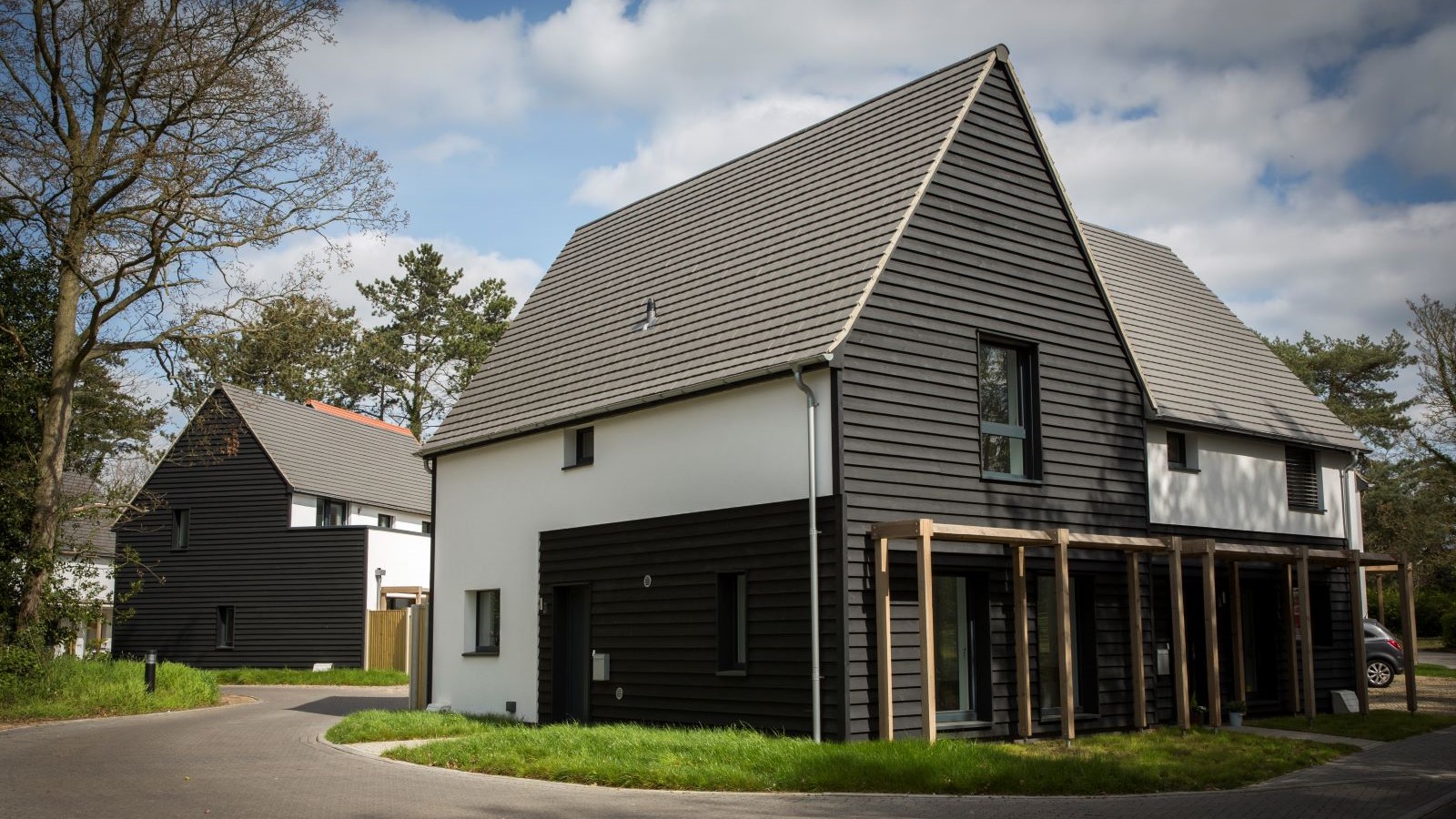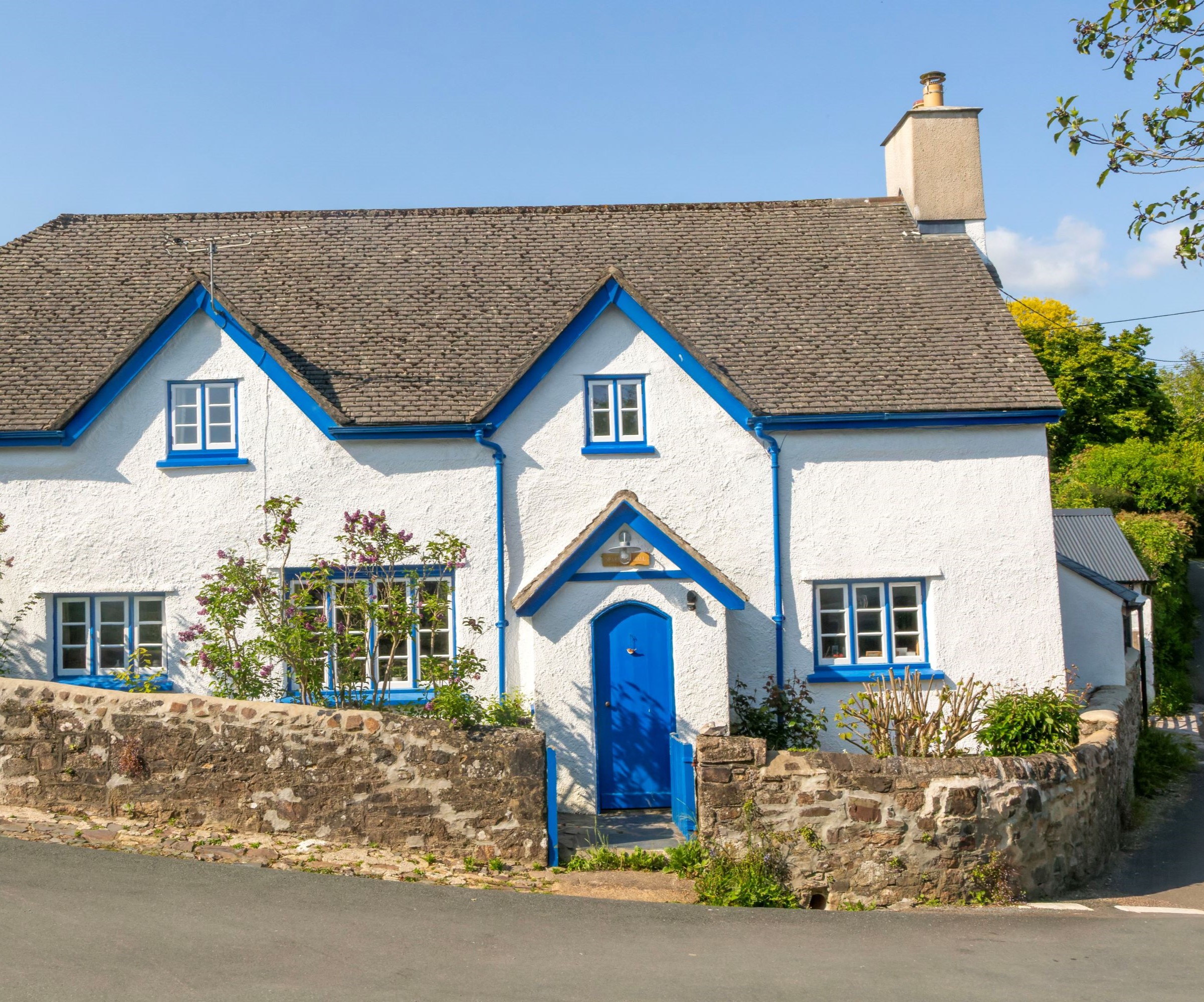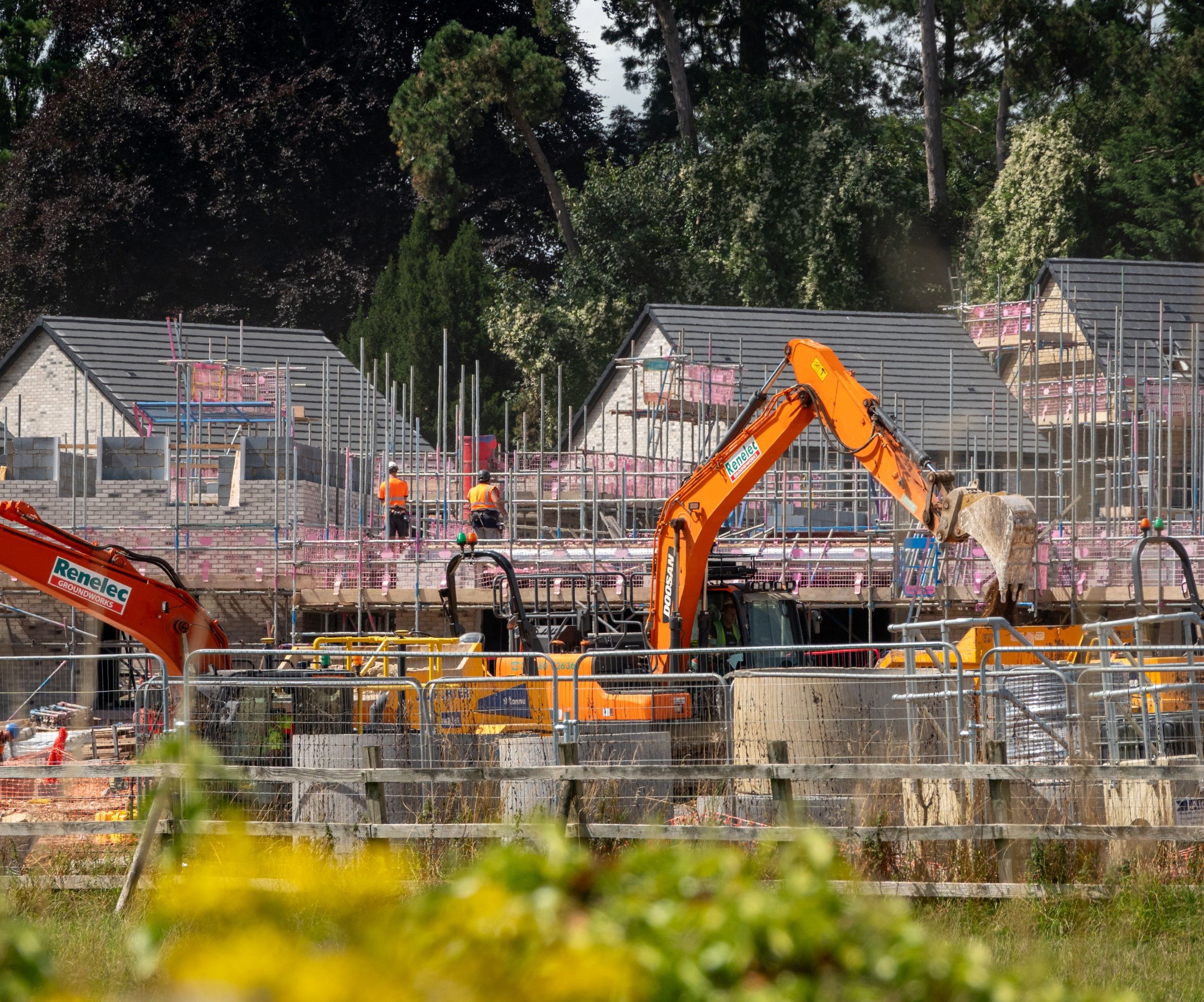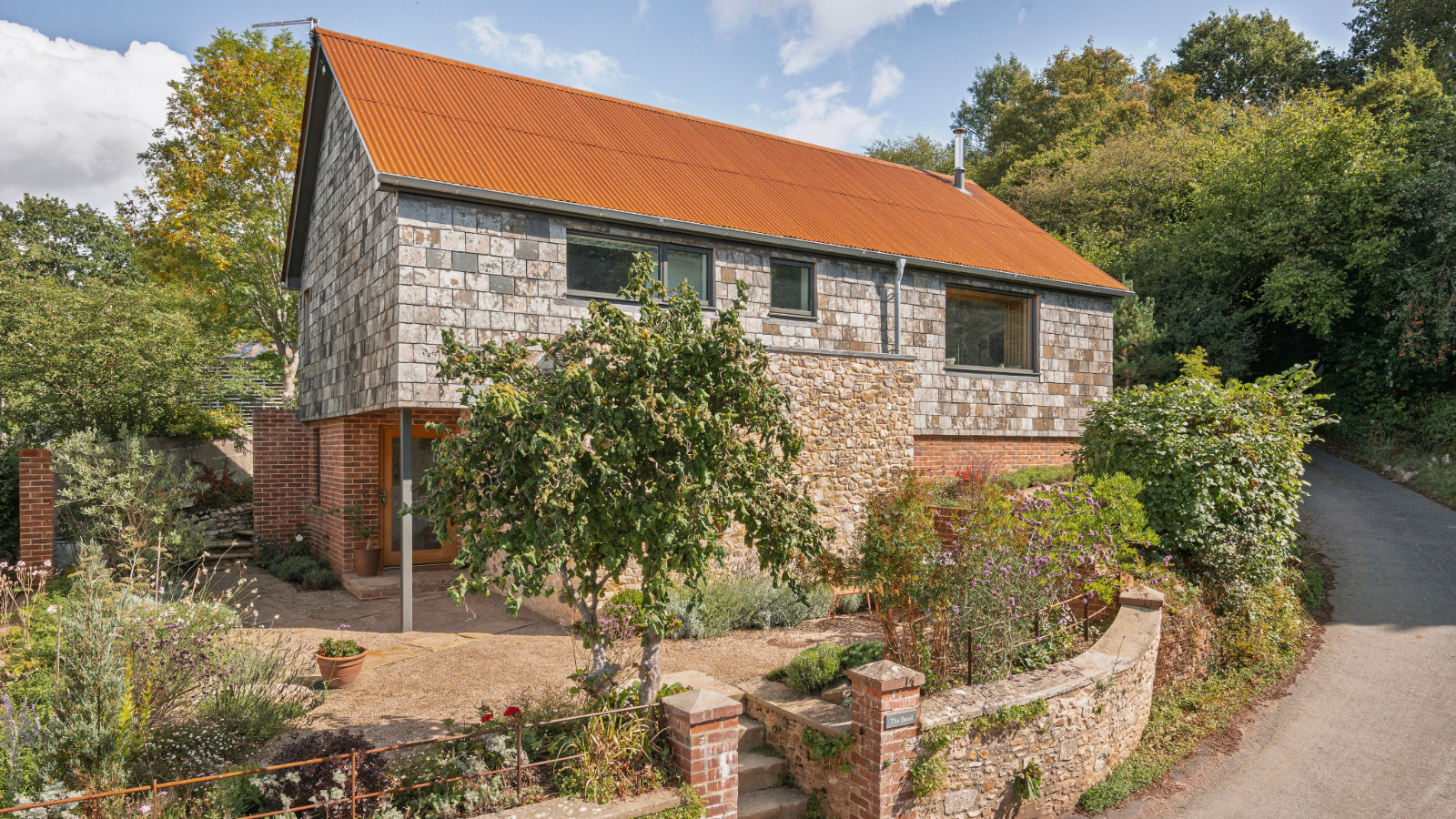How much does house rendering cost?
Whether you’re building a new home or renovating your property, render is a typical choice for many houses. Here’s what you need to know when budgeting for this exterior finish

Looking at house rendering costs is a good starting point when considering opting for this finish for your new build or renovation.
House rendering can be an excellent choice for providing better insulation and weather protection, but it can be difficult to work out the cost of applying it. This is because the cost can differ greatly based on a number of factors, including the render type, the size of the area to be rendered, and the particulars of the project.
But like any building project, whether you're updating an older home or adding a modern finish to a new build, knowing the costs involved is essential for budgeting and planning, . Here we dive into house rendering costs and all the factors that might affect them.
House rendering costs – by render type
Selecting the appropriate render type requires evaluating the costs associated with the precise specifications and features of the property. Even though the initial costs could differ, taking into account factors like lifespan, maintenance, and aesthetic appeal will help guarantee that the render of choice increases the home's worth and longevity.
Additionally, homeowners should consider speaking with qualified plasterers/renderers to get comprehensive estimates and guidance, specific to their project needs.
Depending on the type of render selected, the size of the property, and other project-specific requirements, the cost of rendering a typical house could vary significantly. But, to give you an overview, the following are costs for the most typical types of render, based on the necessary labour and materials for a standard three-bedroom home with a surface area of between 100 and 150/m2.
1. Cement render costs
- Average cost from £40 to £60/m2.
- Typical house costs: £4,000 to £9,000 in total
The most standard used form of render is cement render. Although reasonably priced, it needs to be painted and repaired on a regular basis. In time it is prone to cracking, particularly if the wall structure beneath it shifts or lowers.
Bring your dream home to life with expert advice, how to guides and design inspiration. Sign up for our newsletter and get two free tickets to a Homebuilding & Renovating Show near you.
2. Acrylic render costs
- Average cost from £50 to £70/m2.
- Typical house cost: £5,500 to £10,500
Acrylic render is less likely to crack since it is more flexible than cement render. Over a base render, it is applied as a thin finishing coat. It is well-known for its longevity, resilience to water damage, and tolerance to UV rays, It also comes in a variety of colour options.
3. Silicone render costs
- Average cost from £60 to £80/m2
- Typical house cost: £6,000 to £12,000
Excellent water repellency, flexibility, and durability characterise silicone render. Additionally, it has excellent breathability, which helps avoid moisture-related problems such as damp. Modern homes frequently choose silicone render since it is self-cleaning and requires less upkeep.
4. Monocouche render costs
- Average cost from £45 to £70/m2
- Typical house cost: £4,500 to £10,500
Painting is not necessary with monocouche render which is a through-coloured, single-layer render. Applying it can be done quickly which saves on labour costs. This kind of render is well-liked for both new construction and renovations because it provides a clear, neat finish. Because of the material's qualities, it might be more costly than cement render, despite requiring less upkeep.
5. Lime render costs
- Average cost from £70 to £100/m2
- Typical house cost: £7,000 to £15,000
Because lime render is flexible and breathable, it is typically utilised for older or period homes, such as cottage renovations. It is a sustainable solution that's effective in controlling the amount of moisture in walls. Because lime render requires specialised knowledge to apply and costs more for materials, it could turn out more expensive.
Factors that affect house rendering costs

Like all building projects and their individual trades, other than the type of render used, there are also several other factors that will influence your house rendering costs.
1. Area size – The render cost increases with the size of the surface area that needs to be rendered. Since costs are usually determined on a square metre basis, even slight variations in area, shape and number of openings, can have a big effect on the total amount budgeted for.
2. Preparation work – More preparation work will be needed if the current background is broken, uneven, or covered in outdated render. This can involve base coat application, crack repair, and cleaning, all of which raise the final cost.
3. Scaffolding – This may be required for taller homes or areas that are challenging to access, which raises costs.
4. Labour – The area, the complexity of the work, and the level of expertise of the participating tradespeople can all affect labour costs. Generally speaking, more complex designs or difficult tasks can call for specialised labour, which might increase costs.
5. Location costs – Final costs can differ dramatically based on where the project is located. Compared to rural locations, labour and material prices are typically greater in urban areas, especially in London and the South East of England.
6. Weather – The ideal weather for rendering is moderate and dry. The cost may go up if the work has to be done during a season when weather patterns are less predictable to accommodate possible delays, or the requirement for protective measures to prevent ‘wash off’.
7. Material specification – The cost will also be influenced by the specifications of the materials used. Although higher-quality materials may cost more up front, they frequently last longer and need less maintenance over time, so they are more cost-effective in the long term.
8. Accessibility and detail – Less accessible projects such as those on small streets or with complex architectural details may cost more because they take longer to complete, and require specialised tools and scaffolding.
New-build vs renovation rendering costs
Renovating an existing property versus building a new one has many different factors that can affect the final cost. While the cost of a new build is typically more readily identifiable and foreseeable, renovations include a number of other factors that may increase costs.
Additional costs in renovation projects can be caused by insufficient surface preparation, repairs, incompatibility of materials, and unforeseen issues. When thinking about rendering for new builds versus renovations, you will be better able to budget and prepare for unexpected challenges easier on a new build by being aware of these distinctions.
Always allow a contingency sum of at least 15% for a renovation project, to cover you for those ‘rainy days’.
Cost of house render with external wall insulation
If you are considering rendering your house then external wall insulation (EWI) may be worth considering. Firstly because it will improve the energy efficiency of your home, and secondly because there are various grants available for this product at the moment so it may not cost you anything at all. Expect to pay and between £60-80/m2 for your external wall insulation costs.
To help with budgeting for this additional factor, consider the Great British Insulation Scheme, a government programme which helps British homes become more energy-efficient. Targeting the nation's least energy-efficient houses, it is managed by Ofgem and aims to combat fuel poverty and lower energy costs. The programme, commonly referred to as ECO+, is different from the ECO 4 scheme, which is intended for low-income households.
Additional house rendering costs to consider

Scaffolding costs may be necessary for any kind of rendering project, particularly for townhouses. This could increase the overall cost by up to £1,500, based on the project's size and complexity and timeline for the project.
The cost may also increase if the current surface needs significant preparation, such as cleaning, repairs, or the removal of outdated render by ‘hacking off’. The cost of preparation work could increase by £10 to £30/m2.
There’s no doubt about it that any form of plastering is messy, so make sure you or your tradesperson has allowed for protection in their quotation.
Finally, who is providing the skip at a price of at least £280 for those old bags of render and surplus materials? Try and push this cost into the plasterer’s quotation, so that they fill the skip much more effectively and efficiently than if you were paying for it.
FAQs
How much does house render cost to maintain?
Factor in painting cement-based render every four years as part of ongoing maintenance costs. A regular check will also mean you spot any need for render repair. For a typical semi-detached house, expect to pay up to £1,500 for a painter, materials and a tower scaffold.
If you’ve opted for external wall insulation, acrylic, silicone or monocouche then these finishes may just require a hydro wash every 4-5 years as they are self-coloured. There are plenty of professional companies online who offer this quick and effective service for around £250 for a typical terraced house.
How much value will the new render add?
Enhancements in appearance, such as rendering, can raise a property's value straight away. A well-rendered property is frequently seen as being more substantial, well-cared for, and modern, though the precise value added will vary based on things including the type of render, quality of craftsmanship, and the local housing market.
Higher valuations and asking prices may result from these perceptions. Rendering may raise the value of a home by as much as 5-10% in certain circumstances, particularly in places where contemporary design is highly desired. Consult a nearby estate agent to determine the additional value.
It's critical to assess the property values in your neighbourhood. By exercising caution in this manner, you can guard against the risk of investing money on rendering your property, but it doesn't increase the property's value and so prevent financial losses.
How do I find a tradesperson to render my house?
The best tradesperson to apply house rendering are plasterers, not builders. Preferably time served with City and Guilds qualifications too. If it’s external wall insulation you’re after, then approach some EWI companies directly, as this is a different process to traditional plastering.
When it comes to getting render quotations, invite the companies or tradespeople to the project so they can see the work required, including any access issues, hacking off and repairs if it’s a renovation. I always advise clients to get a minimum of four written quotations when pricing any element of building work as that way you get a broad spectrum of prices to compare and contrast.
If you are still planning your project, take a look some of our house rendering ideas for inspiration on how to finish off the exterior. From mixing render with cladding to using render on an extension to ensure none of the character of your home is lost, we've got all sorts of examples for what you can do to maximise the appearance of your build.
Tim Phillips is an experienced senior quantity surveyor and estimator and has worked in the construction industry for over 35 years. He has worked on many varied projects in this time, for corporates, public bodies and private residential clients, managing multi-million budgets.
For the past 13 years, Tim has worked on a freelance basis, whilst managing his rental property portfolio. He has extensive experience of undertaking his own full-scale house renovations. He is also a speaker and expert at the Homebuilding & Renovating Shows.

